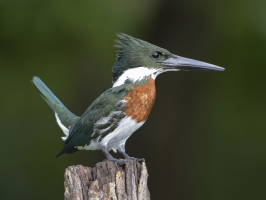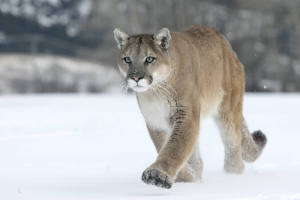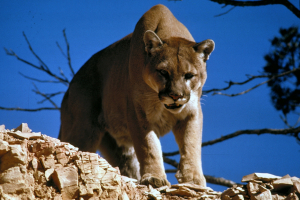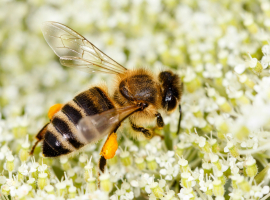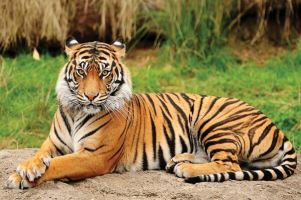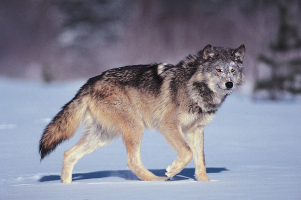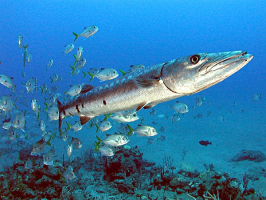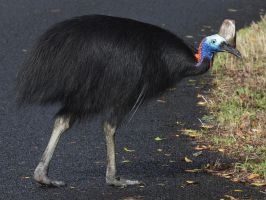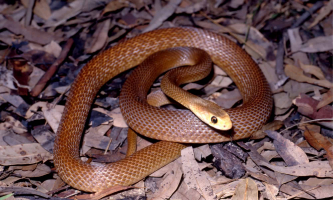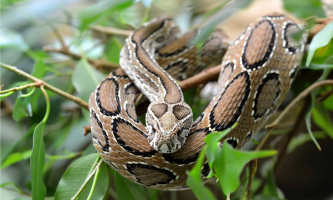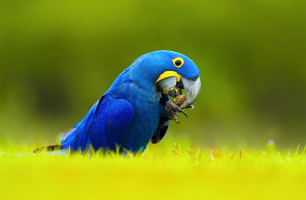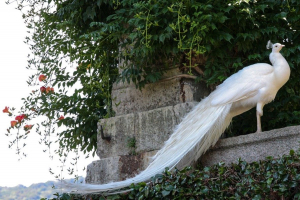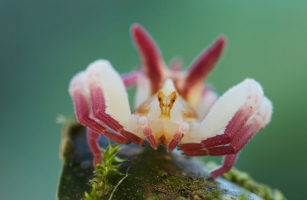Top 10 Most Dangerous Amazon Rainforest Animals
The Amazon Rainforest is a moist forest spanning nine South American countries along the Amazon River. Over half of the world's remaining rainforest, as well ... read more...as the largest variety of living plant and animal species, are found in the Amazon River Basin, which is also the largest and most biodiverse region in the world. These forests are also home to some of the most dangerous animals known to humans. Here is a list of the most dangerous Amazon rainforest animals, let's find out!
-
Anacondas are not venomous, and their bite does not make them deadly, despite what certain movies might have us believe. The green anaconda, one of the biggest snakes in the world, can reach a length of 30 feet, which is two times the size of a giraffe. It is the largest snake on Earth. They are aquatic creatures that can silently approach their victim, strike it with force, then smother and kill it with their muscular bodies. The prey is subsequently swallowed completely by them. They frequently hunt a variety of prey, including jaguars, humans, deer, capybaras, and wild boars. Additionally, you can learn about the world's most lethal animals.
The male species of green anacondas look for females for mating between the months of April and May, however, they spend most of their time alone. There are situations where different kinds of green anacondas may go after the same female. Numerous males are wrapped around a single female in what is known as "breeding balls" in an effort to mate. There have been reports of female green anacondas eating smaller male anacondas, a cannibalistic trait that occasionally manifests in these animals.
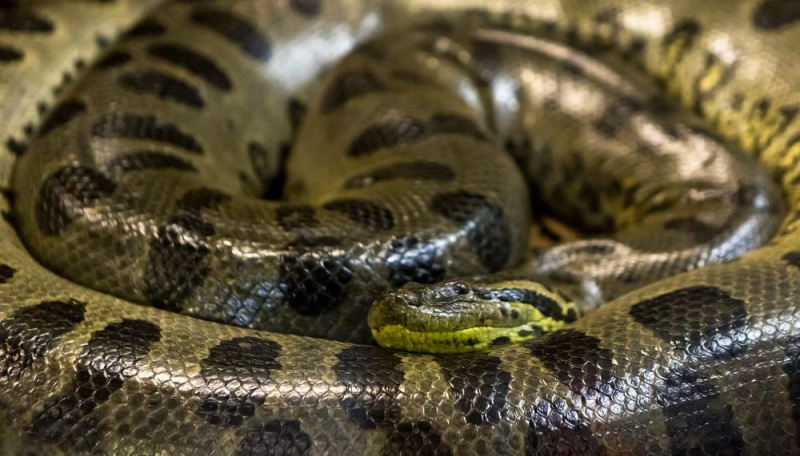
Via: Encyclopedia Britannica 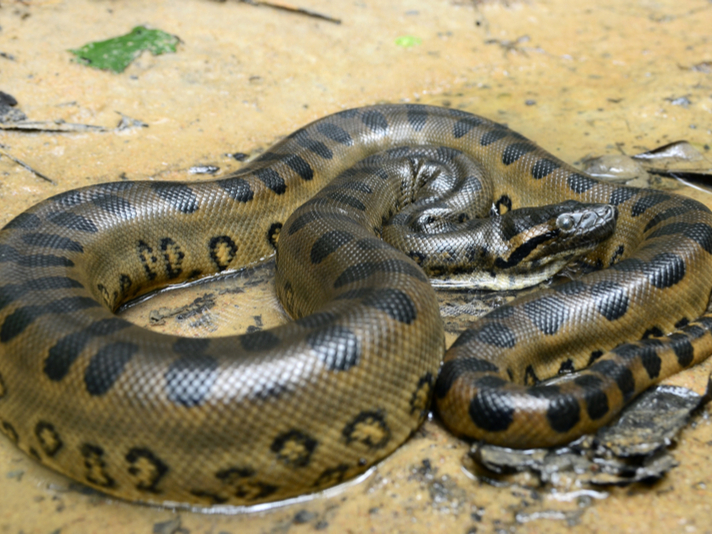
Via: Reptiles Magazine -
One of the biggest species of alligator in the world is called the black caiman, and it lives in the Amazonian basin. This hunter from the Amazon rainforest kills its prey by approaching it from underwater and then smashing it with its strong jaws. The catch is then dragged underwater till it drowns. All creatures, including small fish, otters, dogs, and deer, as well as jaguars and other caimans, are killed by it. Humans are only at risk from very huge caimans, which can grow to be 6 meters long.
The black caiman's body is covered in tough scales that serve as armor, yet when asked what color they are, they can be described as olive green, grey, brown, or black. The species has ridges of bone over its huge eyes and is primarily white. They are endowed with powerful molar teeth utilized for breaking food and have great hearing and vision. Because they maintain control over a variety of creatures (their prey), the animal species is one of the key animals in their area.
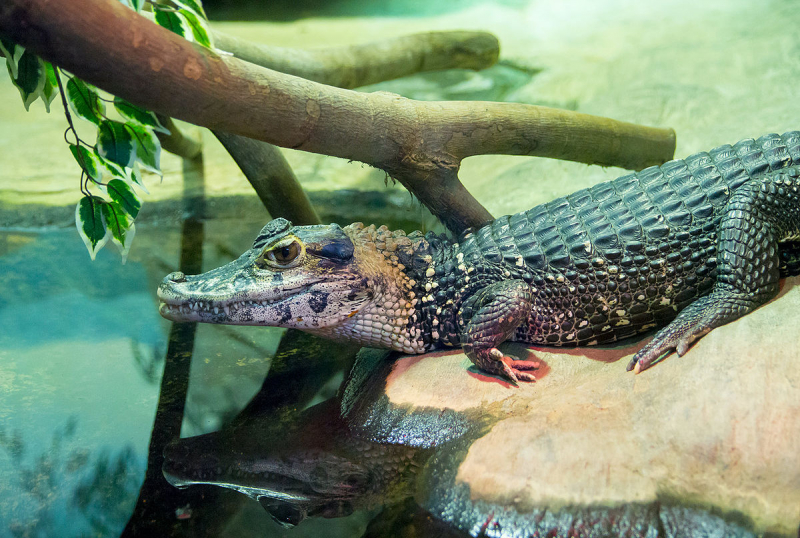
Via: Wikipedia 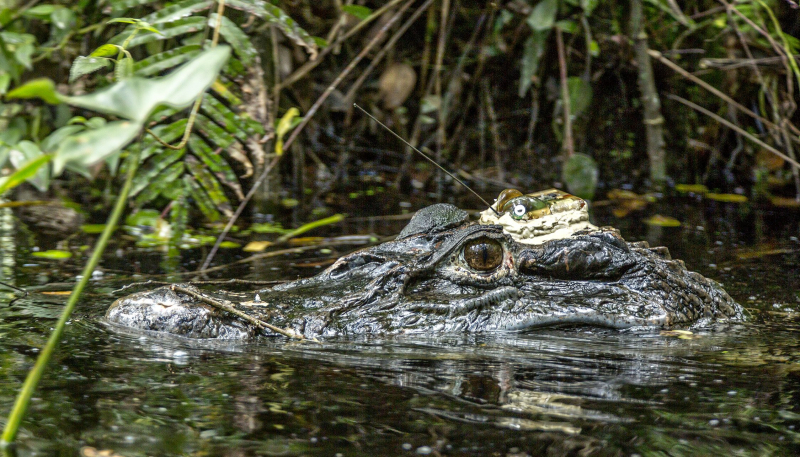
Via: iStock -
Although it appears to be an eel, the electric eel is actually a fish. Its three internal organs are capable of producing five times as much electricity as a typical plug point. It shocks and immobilizes its prey with this energy before devouring it completely. In order to scare off the assailant, it also discharges electricity as a defensive strategy. If the eel is unintentionally trodden on, humans are typically assaulted by it. The majority of fatalities result from drowning and subsequent paralysis rather than the shock itself. The eel is one of the top ten most hazardous animals found in the Amazon rainforest due to the way it kills its prey.
The species can create the power of 600 volts, which is about 5 times stronger than the electricity generated in a typical US wall socket, and possesses about 6000 electrolytes, or cells that produce electricity. The shock has the power to swiftly bring down a horse. Humans can be killed by two or three shocks from an eel, although they frequently come into touch with people. The animal has a 15-year wild lifespan and a 22-year captive lifespan.
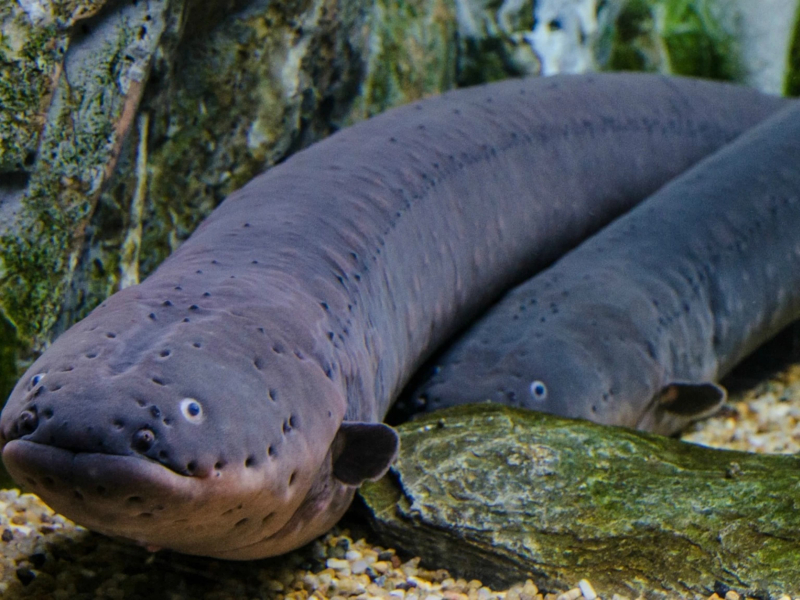
Via: National Geographic 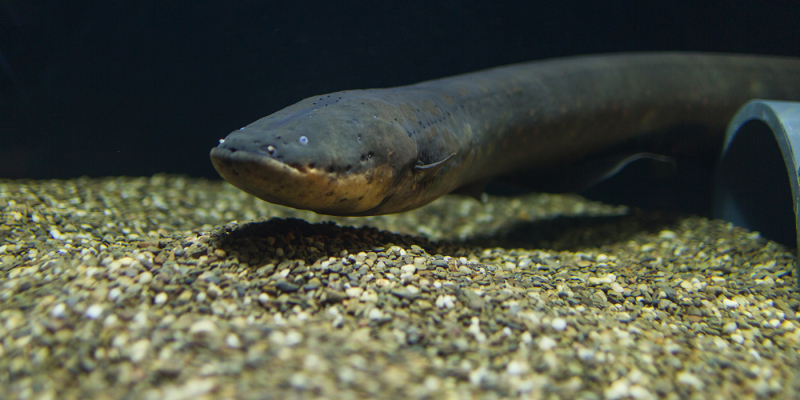
Via: Smithsonian's National Zoo -
The jaguar is the largest cat in South America. It is the largest feline species in the Americas and the third-largest in the world with a body length of up to 1.85 m and a weight of up to 96 kg. This animal is a lone creature, a fair swimmer, and a night monster. This large feline group is the sole surviving member of the Panthera suborder native to America. Although a melanistic black coat occasionally appears in some individuals, this animal's obviously imprinted coat features bright yellow to tan-hued fur covered by stripes that progress to rosettes on the flanks.
It rarely comes in contact with humans, and when it does, it is usually because it is trying to attack livestock. The jaguar's powerful chomp allows it to pierce the carapaces of turtles and turtles, and it may even kill prey by simply biting through the skull between the ears of mammals to cause fatal damage to the brain.
Habitat loss – jaguar now occupies less than half of its historical range, growing conflict with farmers and ranchers, as well as climate change which has increased the risk of wildfire. Reduced water resources also have driven the animal to be an Amazon rainforest endangered species.
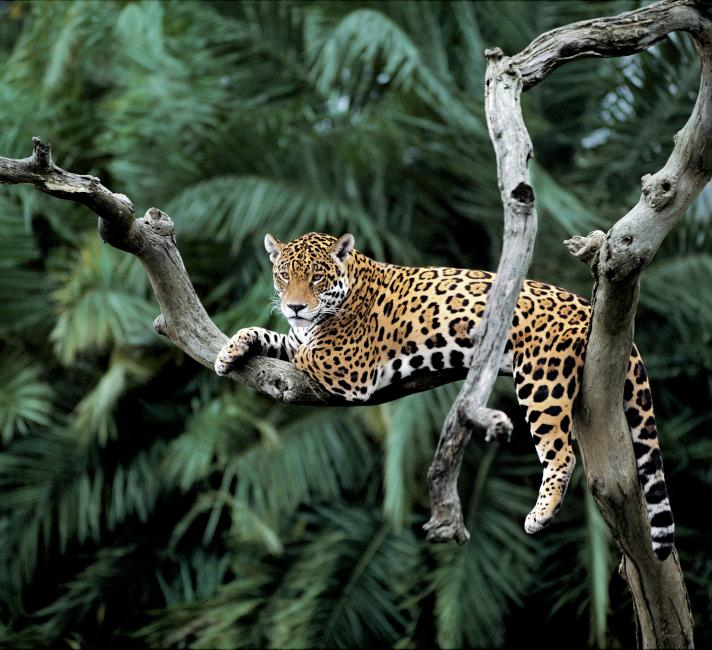
Via: WWF 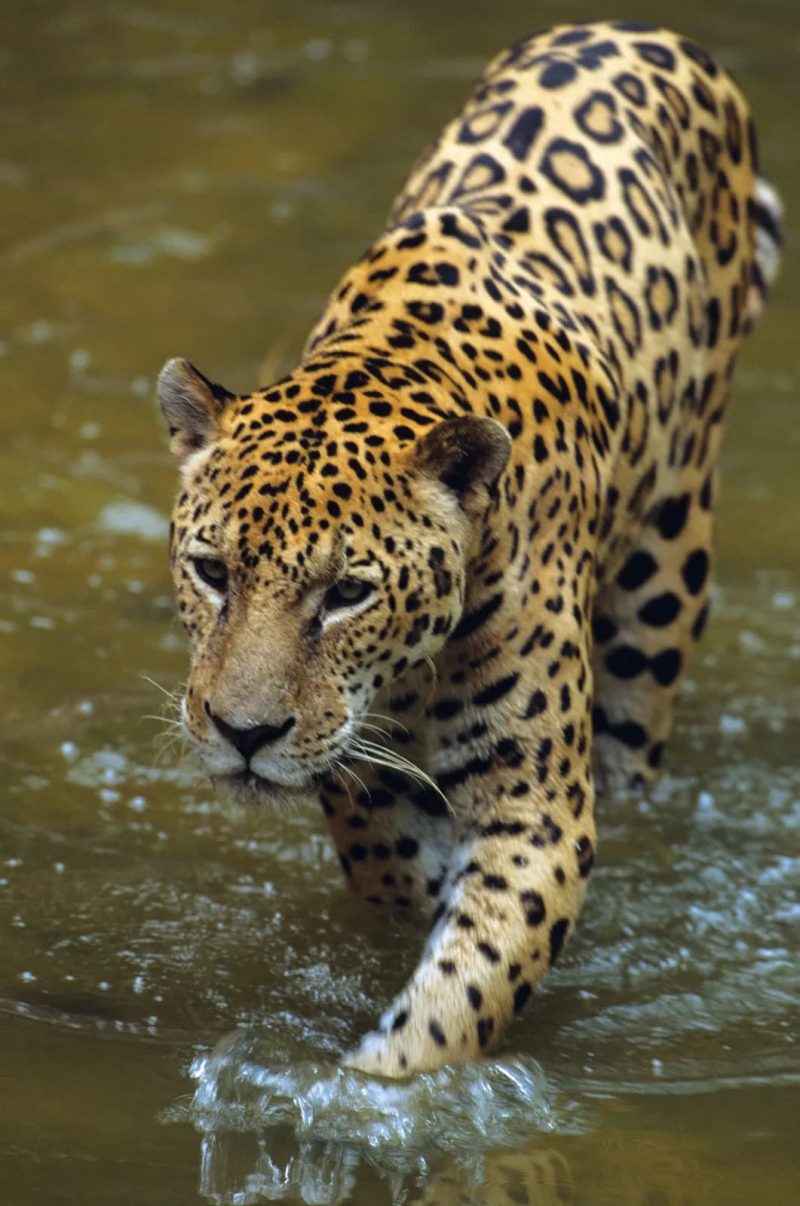
Via: Encyclopedia Britannica -
Like the anaconda, the piranha is a well-known animal due to the film industry's infatuation with it. The most dangerous species, the red-bellied piranha, is a scavenger that typically consumes dead animals. It is believed to only attack living animals when threatened or when there is a lack of food around. Piranhas have attacked humans before, although these encounters only cause damage because of the fish's razor-sharp teeth. Piranhas are known to engage in cannibalism and consume other individuals of the same species. It is also among the world's deadliest fishes.
They have a silver body coated in crimson spots that functioned as camouflage in the murky waters, to speak of appearance. The species weighs about 7.7 pounds and can reach lengths of 5.5 to 17 inches. A silver hook will not withstand the bite of a piranha's single row of pointed, razor-sharp teeth. The jaw bone of a piranha is the strongest and strong enough to quickly crush a human hand. Piranha teeth are used locally to manufacture tools and weapons. Piranhas have a unique organ that allows them to detect blood in the water, just like sharks do. In the wild, they can live up to 25 years, and in captivity, 10 to 20 years.
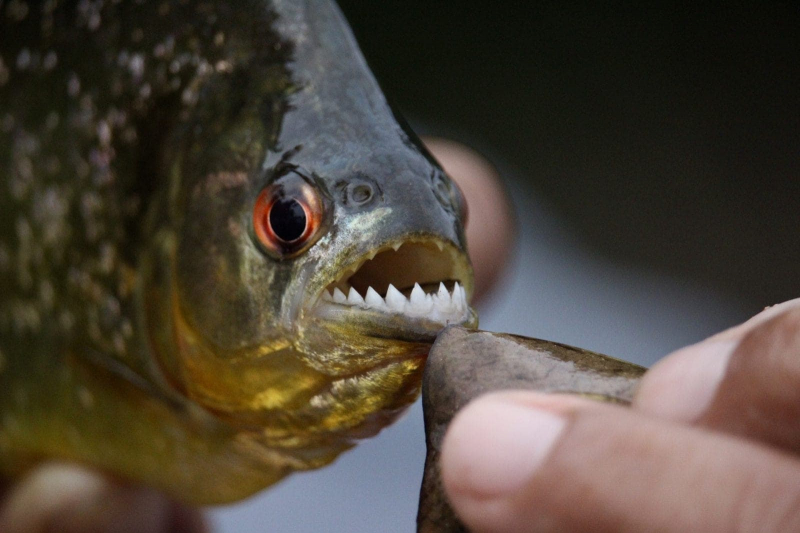
Via: Rainforest Expeditions 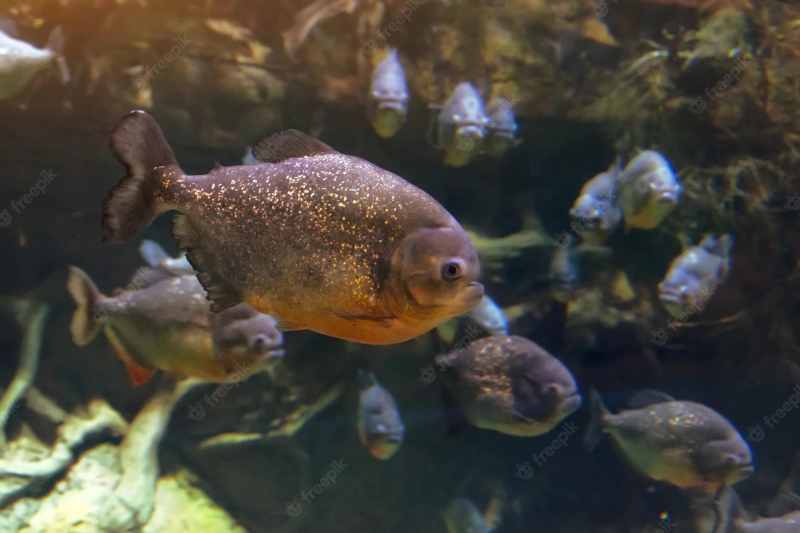
Via: Freepik -
As the name suggests, poison dart frogs are brightly coloured frogs that secret poison from glands on their skin. This poison is highly toxic and causes heart failure if it enters the body in large amounts. Brightly colored poison dart frogs, which can be yellow, copper, gold, red, blue, green, or a combination of those colors, are notoriously toxic, and their eye-catching coloring serves to deter predators. They differ from other frog species in that they are active during the day rather than at night.
Due to the Native Americans' usage of their toxic secretions to poison blowdart tips, these amphibians are frequently referred to as "dart frogs". However, only four of the more than 170 species - all of which are from the genus Phyllobates, which is distinguished by the comparatively large size and high levels of toxicity of its members - have been identified as being utilized for this purpose.
With a few arboreal species, the amphibian is primarily terrestrial, and habitat loss has increased food competition and the risk of predation, bringing these frogs closer to extinction. Scientists also found chytridiomycosis, a bacterial disease found in amphibians, to have killed thousands of animals each year, which resulted in the extinction of some species.
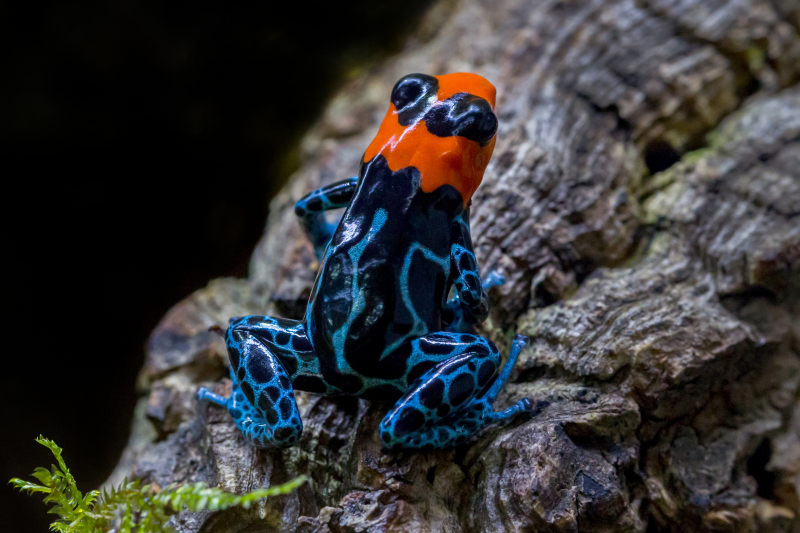
Via: McGill University 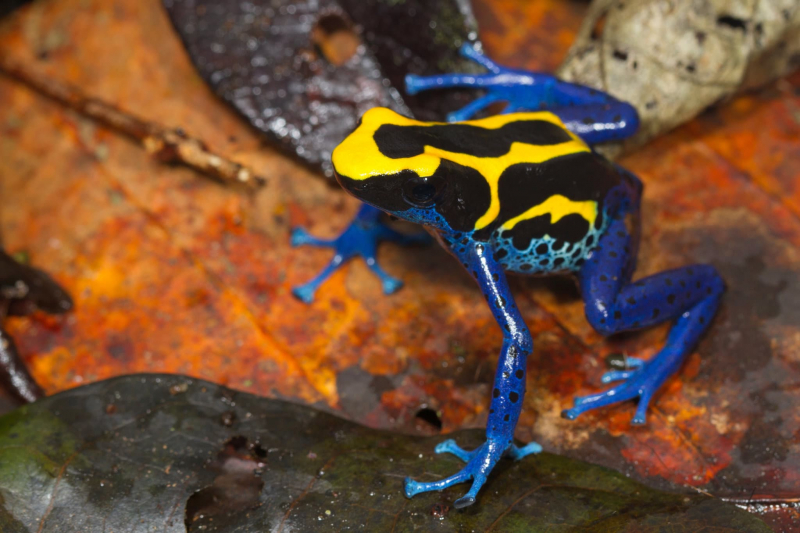
Via: The New York Times -
One of the top three most deadly shark species is the bull shark, which frequently attacks people who enter its habitat. It forages for fish, dolphins, and snakes in the murky river waters where it makes its home. People can't see it because it swims in murky, shallow water, and if they get too close, the shark will attack. Because the shark drags its victims into the water and causes them to drown or lose too much blood, the bite of the shark can be lethal. The species can reach a maximum length of 7 feet, although on average, females of the species grow to be 7.8 feet long and weigh 285 pounds.
The male of the species weighs around 209 pounds and is smaller than the female. One of the shark species that can thrive in both freshwater and saltwater is this one. The bull shark has half the salt content of the water around it, while other shark species have the same salt concentration in their blood as compared to the water around them, which allows them to move between saltwater and freshwater and vice versa. The bull shark can survive in water as shallow as 2 feet, which is why they frequently come into touch with people. Also, female bull sharks prefer to give birth in shallow water because they will prevent their young from getting eaten by the bigger sharks.
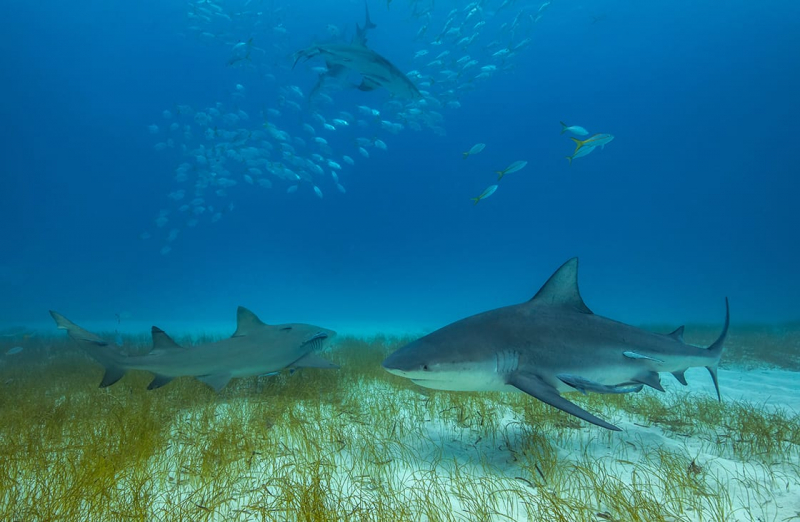
Via: Rainforest Cruises 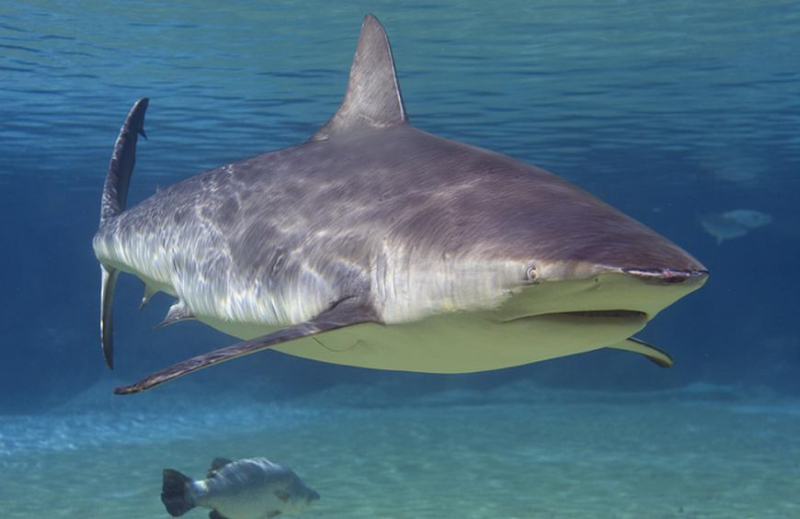
Via: iStock -
The Brazilian wandering spider, which is native to the Amazon rainforest and produces some of the most lethal venoms in the world, is the first insect to appear on the list of the most hazardous Amazon creatures. It is a night-hunting, ground-dwelling spider. It may hurt those who approach it too closely; the venom produces a painful sting and may eventually result in paralysis. The spider with the world's most lethal venom is widely scattered throughout the jungle floor, hence the moniker. However, during the day, they hide beneath rocks and in crevices because they prefer dark, moist environments.
Additionally, as they are frequently observed in areas where humans store unattended objects like stacks of wood, clothes they don't wear, or other items in the garage or closet, people should exercise caution in those areas. If there are many spiders in the area, one of their most aggressive species will engage in territorial battles with other spiders.
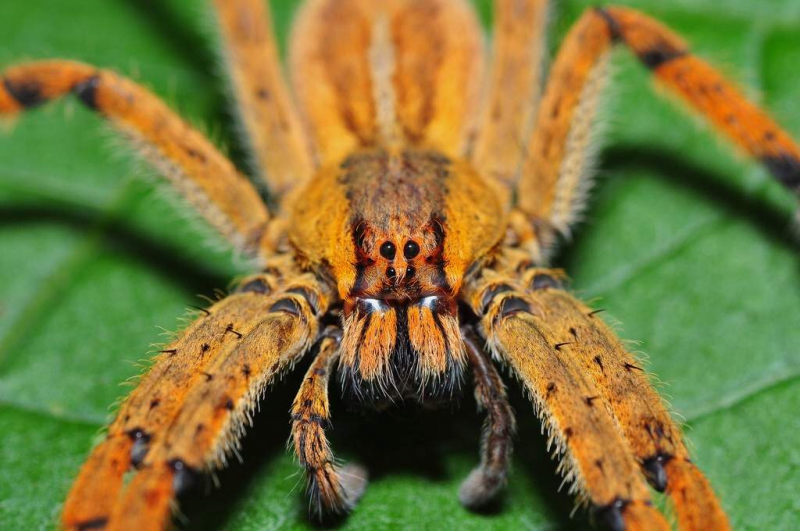
Via: Tambopata Ecolodge 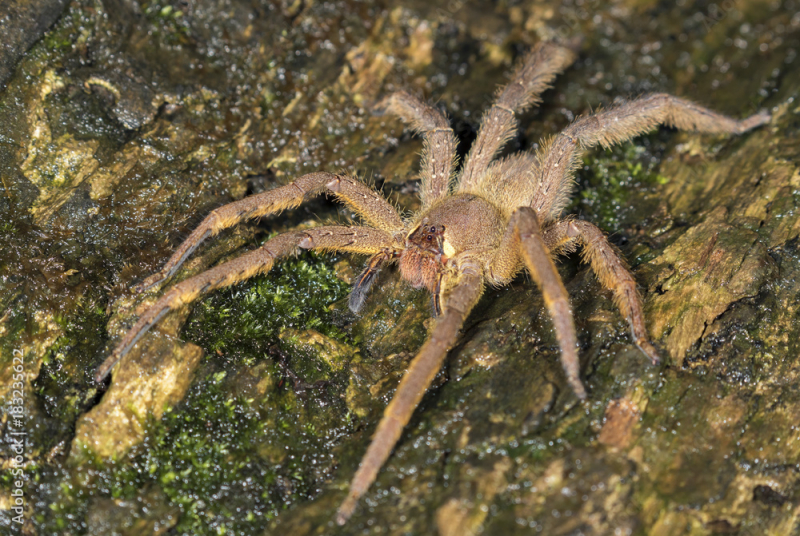
Via: Adobe Stock -
Amazonian Giant Centipede, as its name implies, may reach a length of 30 centimeters. It is a skilled predator that preys on spiders, mice, tiny birds, bats, lizards, and snakes, among other small creatures. Although it is not venomous, it preys by coiling around its victim and consuming it as it slowly rots. Although it cannot harm people, the bite nonetheless results in excruciating pain, fever, and weakness. But it's a strong and perilous animal from the Amazon rainforest. The species have strong jaws that may easily pierce the skin and inject venom that is very painful.
Regarding looks, there are 23 separate portions of the body, each having a pair of legs. Instead of breathing through their mouths, Amazonian Giant Centipedes have tiny holes in the side of each segment that allow them to take in oxygen and stay alive. Because they are nearly blind and enjoy eating insects, tarantulas, small lizards, frogs, small birds, small snakes, rodents, and even bats, they are among the swiftest runners. The species is widely dispersed over South America and on a few Caribbean islands.
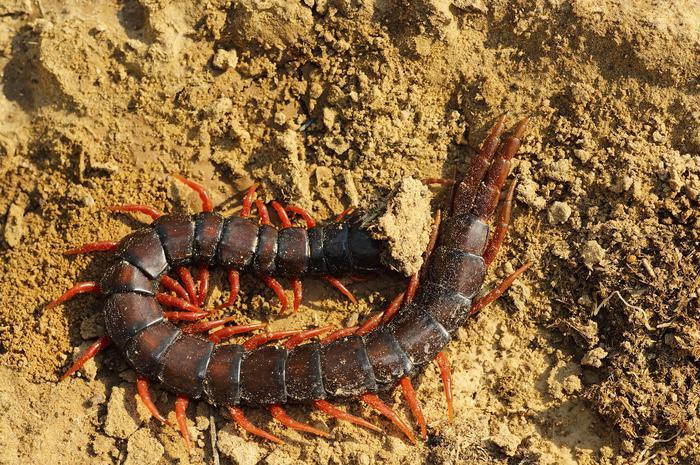
Via: APK Pure 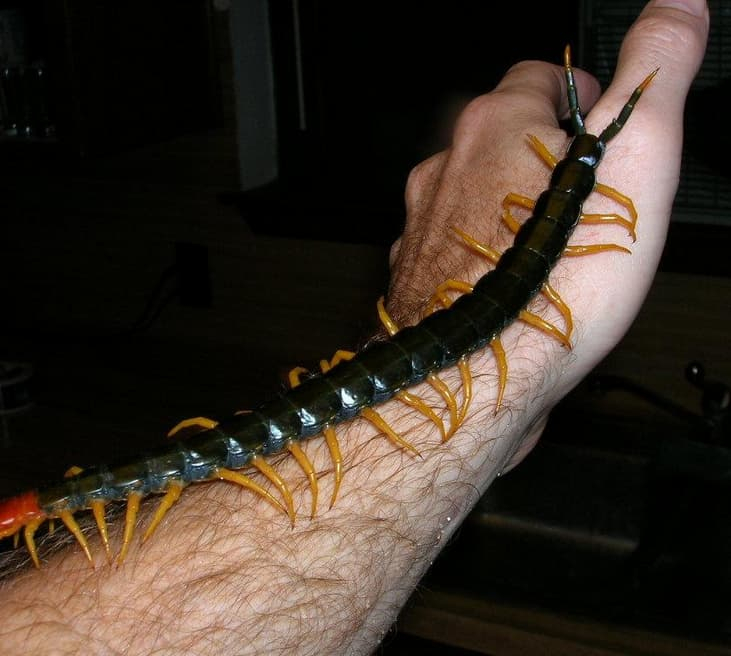
Via: Pinterest -
The name of this bullet ant, which only reaches a length of 2 centimeters, comes from its terrible bite, which has been compared to being shot by a bullet. These ants hunt in packs and their numerous bites can paralyze or kill huge animals. Although the bite is not fatal to humans, it is extremely painful and may induce momentary paralysis in the area where it occurred.
It has the most painful insect bites in the world. The species' sting is among the most severe of all insect species, and it also includes a neurotoxin. It can be 1-3 mm long and is found on the ant's abdomen. They nest on bushes, trees, and the ground, but are usually found in the Rainforest that runs from Nicaragua to Paraguay.
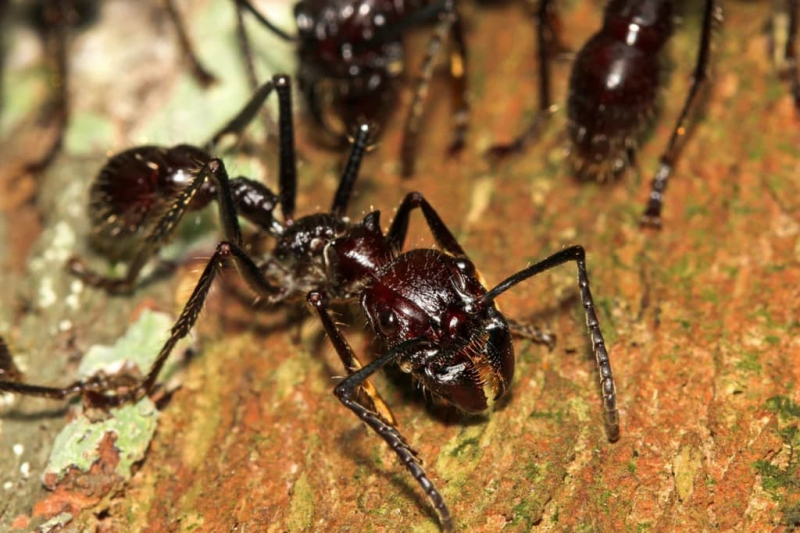
Via: Culture Trip 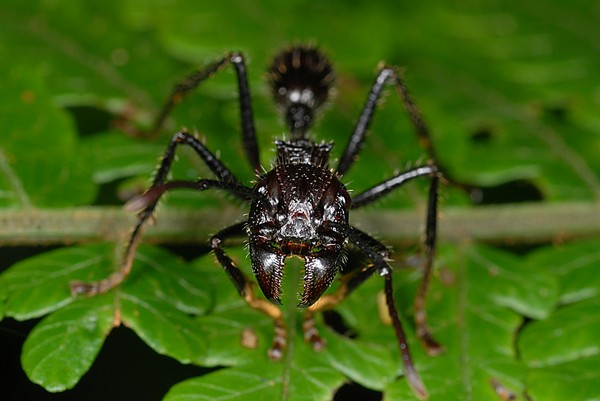
Via: Amazon rainforest tourist info centre












